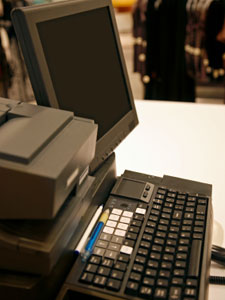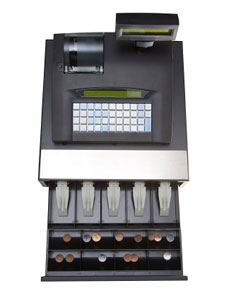POS Systems Part 1


Depending on your technical aptitude and proclivities, choosing a Retail Point of Sale system may feel like a joy-ride of potential or a carnival fun-house full of trap doors, warped mirrors and grinning sales people. The simple truth is that a good Point of Sale (POS) system can be a cornerstone for your your business and a tremendous aid in managing work-flow and implementing reliable systems. A bad POS system can complicate and frustrate your operation and leave everyone (customers and employees) with a poor impression of your operation.
In this first installment I'll give you a little guidance into choosing a POS system. In Part 2 I'll tell you what I've chosen for Adagio and why.
First a little background. Without going into all the details of my work history, let me just say that I've spent many more years formally working in technology than I have in tea. I built, managed and sold technology solutions to Fortune 500 companies, small businesses and government agencies at various points of my career. I had the opportunity to apply all of this to tea a few years back when I set up TeaGschwendner's Point of Sale and Retail Management Systems in the US. Now I get to do it again for Adagio's move into retail.
I'll simplify a rather complex array of options into three basic components. A computer based Cash Register lets you ring up and track sales, charge appropriate taxes, accept credit cards, etc. A Retail Management System helps you run your business and manage "back office" things like employees and inventory. Most modern Point of Sale Systems include both of these components to some degree.
The system that's right for you depends in large part on the complexity of your business. For example, will you have one store or multiple stores? Will you sell wholesale? Will you sell online? You can purchase very simple computerized cash registers and handle all of the "Retail Management" manually, but there are some pretty cool systems out there that will make you much more efficient and allow you to focus more of your time on growing your business. Working on your business rather than in your business (or in this case in the back office). My goal is to be able to support multiple stores with minimal effort, streamline Adagio's wholesale sales process, and integrate at a basic level with our website (customer's, gift certificates, and coupons exist in-store and online).
The list below may appear intimidating, but I've cut out more than 2/3 of the features in my internal list for the sake of brevity. I need a system capable of handling - out of the box - every nuance and complexity of a serious retailer. Trying to explain what this means in a short blog posting is the hard part. :) Some of what I describe may be overkill for you, but here are brief descriptions of the key areas of functionality and what I'm looking for.
| At the Point of Sale | |||||||||||
Inventory Management | |||||||||||
Pricing | |||||||||||
Purchasing and Receiving | |||||||||||
Customer Management | |||||||||||
Employee Management | |||||||||||
Reporting | |||||||||||
Multi-Store Support | |||||||||||
General System Features
| Hardware Support
| | |||||||||
I'll leave you with one parting thought: Choose your battles. If you really enjoy tinkering with computers and configuring software then you can probably save 20% to 40% by piecing together your own system, skipping the training and taking other shortcuts. (That's assuming you get it right quickly and don't spend weeks trying to figure it out or end up paying someone to re-do it in the end.) If you're not a computer geek and will be more valuable working in other parts of your business, just accept that it's going to cost some real money to do it right and consider it a required business expense.
There are a LOT of options and price points out there. I've reviewed systems that would cost under $5,000 for a single store (hardware and software) and systems that cost over $50,000 for the first store. For my money, balancing all options and including all hardware, software, peripherals and professional services, I would expect to spend between $5,000 and $10,000 for a one-lane system in a single store location (Go below $5K and you're cutting off your nose to spite your face... in my opinion). If you're looking to be a little more aggressive, put a couple lanes in each store, and support more than one location you should be prepared to spend upwards of $15,000.
I've spent the last two months researching hardware and software vendors and have made my recommendations to Adagio Management. Once we've made our final decisions I'll share with you what we've selected and why. (Part 2 now available here.)
Adagio Teas
Twitter: @AdagioRetail
